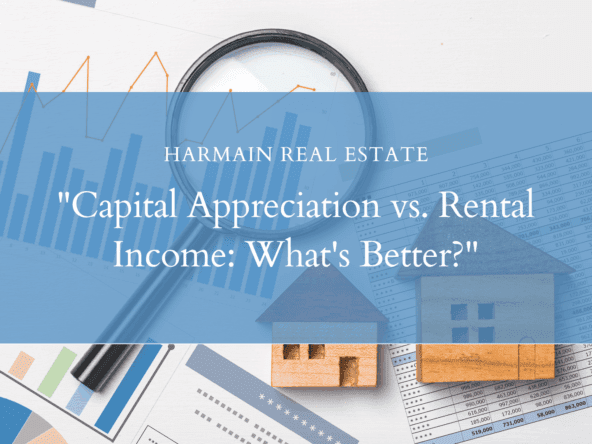In the ever-evolving landscape of global markets, the path to smart investments is often shaped by an intricate dance of data, innovation, and foresight. As we cast our gaze toward 2025, a pivotal question emerges: where should investors direct their focus in a world defined by shifting economic tides and emerging opportunities? This article delves into the heart of market trends, peeling back the layers of uncertainty to reveal sectors and strategies that could shape the investment landscape in the years ahead. Whether you’re a seasoned investor or a curious newcomer, join us as we decode the signals, uncover insights, and navigate the maze of possibilities that 2025 promises to offer.
Table of Contents
- Emerging Sectors Poised for Growth in 2025
- Regional Market Dynamics Shaping Investment Opportunities
- Navigating Technological Disruptions to maximize Returns
- Strategic Portfolio Diversification for Future Stability
- Q&A
- To Wrap It Up
Emerging Sectors Poised for Growth in 2025
- Green Technologies: With countries striving to meet their climate commitments, innovations in renewable energy, clean transportation, and lasting agriculture are accelerating the growth within green tech.
- Biotech & Healthcare: From precision medicine to advanced diagnostics, breakthroughs in biotechnology are transforming healthcare, positioning the sector as a lucrative chance for investment.
- AI and robotics: The integration of artificial intelligence across industries such as manufacturing, logistics, and service automation continues to create substantial revenue streams globally.
| Sector | Growth Driver | Potential ROI |
|---|---|---|
| green Technologies | Government incentives & carbon reduction policies | High |
| Biotech & Healthcare | Innovation in treatments & diagnostics | Moderate to High |
| AI and Robotics | Efficiency in automation & data processing | High |
Regional Market Dynamics Shaping Investment Opportunities
Investment landscapes are increasingly being molded by regional market dynamics, with economic shifts, technological advancements, and policy reforms driving opportunities in certain areas while creating challenges in others. asia-Pacific, as an example, has emerged as a hub for technology-driven investments, thanks to rapid digitalization and booming e-commerce. On the other hand, Europe’s focus on sustainability and green tech is attracting investors seeking long-term returns aligned with global ESG trends. The Middle East is poised for growth as diversification continues beyond oil, particularly in tourism and renewable energy projects. Meanwhile, North America, backed by a resilient tech sector, remains a magnet for venture capital, while Latin America offers untapped opportunities in fintech and agricultural innovation.
To better understand these opportunities, let’s take a snapshot of regional highlights shaping the investment landscape:
| Region | Key Sector | Growth Driver |
|---|---|---|
| Asia-Pacific | Technology | Digital transformation |
| Europe | Green Energy | Sustainability mandates |
| Middle east | Tourism | Diversification strategies |
| Latin america | Fintech | Financial inclusion initiatives |
- Tip: Monitor regional trade agreements, as they often reveal new areas of economic collaboration.
- Reminder: Regulatory landscapes vary greatly, so due diligence is crucial before committing capital.
Navigating Technological Disruptions to Maximize Returns
To make informed decisions, start by assessing industries primed for transformation. Below is a snapshot of sectors to watch and their associated growth drivers:
| Sectors | Key Growth Drivers |
|---|---|
| Healthcare Technology | AI-driven diagnostics,telemedicine expansion |
| Green Energy | Government incentives,rising EV demand |
| Fintech | Blockchain adoption,decentralized finance |
| Advanced Manufacturing | 3D printing,IoT integration |
- Focus on scalability: Invest in technologies that can adapt to growing market demands.
- Anticipate regulatory frameworks: Governments often play a significant role in tech adoption and market stability.
- Opt for diversified exposure: Explore ETFs or venture funds to spread potential risks across multiple innovations.
Strategic Portfolio diversification for Future Stability
Consider the following common allocations to strike a balanced approach:
- 25%: Growth sectors (e.g., tech, biotech).
- 20%: Defensive stocks (e.g., healthcare, utilities).
- 15%: Fixed-income bonds.
- 10%: Real assets (e.g., real estate, commodities).
- 30%: Broad market index funds or ETFs.
| Category | Potential CAGR Growth (2023–2025) | Risk Level |
|---|---|---|
| Green Energy | 14% | Moderate |
| Biotechnology | 18% | High |
| Utility & Infrastructure | 8% | Low |
Q&A
Analyzing Market Trends: Where to Invest in 2025
Q1: what industries are poised to dominate the investment landscape in 2025?
A1: Analysts predict that clean energy, artificial intelligence, and biotech will remain at the forefront of investment trends in 2025. While green energy solutions continue to ride the wave of decarbonization efforts, AI and biotech are being fueled by breakthroughs in automation and healthcare innovation, respectively. These sectors are expected to attract both long-term investors and venture capitalists seeking high-growth opportunities.
Q2: Are traditional industries still worth considering?
A2: Absolutely. Despite the buzz around emerging sectors, traditional industries like real estate and manufacturing shouldn’t be overlooked. The key lies in assessing niche opportunities—think industrial automation within manufacturing or smart cities in real estate development. As these industries evolve,they are integrating cutting-edge technology,giving traditional investments a modern edge.
Q3: How will global economic shifts impact investment decisions?
A3: Ongoing geopolitical dynamics and shifting trade policies will play a pivotal role in 2025’s investment decisions. Investors are keeping a close eye on Southeast Asia, expected to benefit from global supply chain diversification, and Latin America, which is emerging as a hub for renewable energy projects. Staying attuned to these economic realignments could uncover unique regional investment opportunities.
Q4: What role will ESG (environmental, Social, Governance) play in 2025’s market trends?
A4: ESG considerations aren’t just a moral compass anymore—they’re a cornerstone of profitability. By 2025, companies that fail to meet ESG benchmarks may struggle to attract investors. From sustainable farming to carbon-neutral logistics, ESG-compliant sectors are no longer niche markets but mainstream investment options, especially for environmentally and socially conscious portfolios.
Q5: What’s the best piece of advice for investors looking ahead to 2025?
A5: Adaptability and research will be critical. Markets are evolving faster than ever,and sticking rigidly to past strategies may hinder growth potential. Diversify across industries, stay curious about emerging technologies, and be prepared to adapt your portfolio to align with the latest global shifts. In a world driven by innovation, agility is the name of the game.
To Wrap It Up
As we peer into the shifting sands of 2025, it’s clear that navigating the investment landscape requires equal parts intuition, research, and adaptability. Market trends aren’t static—they evolve, ripple, and intersect with the world around them. Whether your focus is on emerging technologies, sustainable ventures, or global markets poised for transformation, the key lies in staying informed and bold enough to take calculated steps.
While no crystal ball can guarantee the future, understanding the trends shaping tomorrow can help you position yourself for success today. So,as you prepare to chart your course through the investment waters of 2025,remember: informed decisions sow the seeds for prosperous possibilities.




